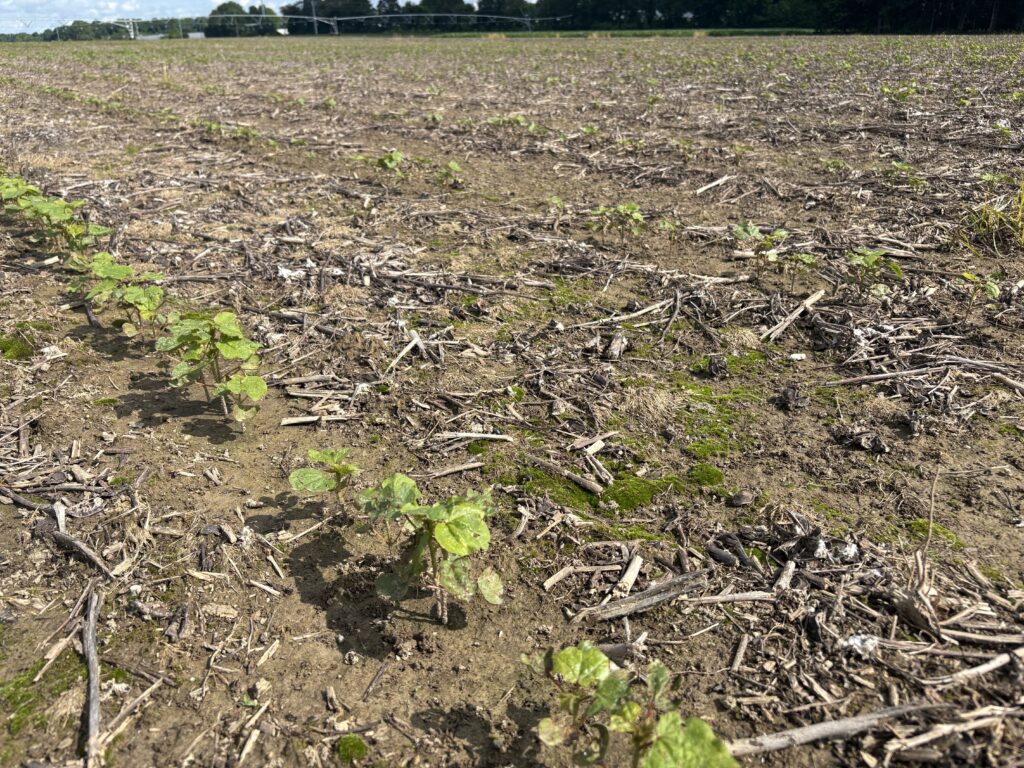 Most of the conversations I’ve had in the past few days have centered around what to do with thin stands, when to stop planting, and how to manage late planted cotton. In this post, I’m going to try to briefly tackle these three topics. Be prepared, my opinion on a few of these items may run counter to the opinions of others. Spoilers- if in doubt, keep it; yield potentials begin to decline rapidly as we move into June; and June cotton should be planted thinner than April or May cotton.
Most of the conversations I’ve had in the past few days have centered around what to do with thin stands, when to stop planting, and how to manage late planted cotton. In this post, I’m going to try to briefly tackle these three topics. Be prepared, my opinion on a few of these items may run counter to the opinions of others. Spoilers- if in doubt, keep it; yield potentials begin to decline rapidly as we move into June; and June cotton should be planted thinner than April or May cotton.
First, I think we should briefly consider our current conditions. I believe the picture above best captures our season. Moss and cotton have little in common, other than the fact that they both contain chlorophyll; as a non-vascular plant that prefers shade and poorly drained soils, moss should not thrive in an field where we are attempting to grow cotton. Saturated soil conditions for a prolonged period of time are detrimental to a developing cotton plant. Unfortunately, many of our acres have suffered through significant periods of saturation. Above ground, these conditions will slow vegetative growth. This slowing is exacerbated by cool conditions, which we have also experienced. More concerning, however, is the plant response below ground. Under prolonged saturated conditions, taproot growth will slow and the plant will attempt to focus root growth near the soil surface, where oxygen is available. These stresses make the plant more susceptible to disease.
To keep, or not to keep?
When we assess stands, we try to count healthy plants. Many in the past few days have called with questions on whether or not to keep a stand of 25,000-30,000 plants per acre. My first question is always around uniformity. How many large (greater than 4ft) skips are present in the field? The next question concerns plant health. Do seedling roots appear healthy? If large areas of the field contain skips greater than 4 ft, the seedlings that are present are often also struggling. I always prefer to keep a marginal stand with relatively few skips. But when I walk fields with large and frequent skips, I often find the seedlings in-between those skips to also be in poor health with a yield potential that I would argue is less than that of the yield potential of a timely replant.
When should we stop planting?
The answer to this question will be different for every operation. The yield potential of cotton planted in early June varies by year and is most commonly a function of the temperatures we are given in late September and October. I use the figure below frequently to justify an overall reduction in seeding rates, but today I want you to focus on the overall trends as we move from May to June. This data was generated in MS, MO and TN from 2016-2018, and the complete publication can be found here. As we move into June, our yield potential in this study dropped to approximately 75% of what we might have made if we planted in late April. Please remember that this is simply an average of several site-years worth of data; we may see 90% of our April 30th yield potential with a June 5th planting date, or we might see 60%. But historically speaking, we definitely begin to see a steep decline in yield potential as we move out of May. For most, margins were thin at 90% of an early May planting date. Setting a realistic yield goal will be critical in determining whether or not to continue to push deep into June. 
I’m planting into next week (June 1st through 4th. . . ish). What needs to change?
A few I’ve visited with intend to plant through May 35th. In my opinion, the first thing we need to do is set a realistic yield goal and make an estimate of price. From that point, I’m looking through the season to make sure I can get the crop out of the red and into the black. Step one is seeding rate. Take a look at this publication by Boyer et al. (2020). He dove into the data we generated to create the curve above. As you can see from the graph above, the yield potential differences between seeding rates dissolves as you move into early June; there is no statistical difference in yield between 30,000-50,000 plants per acre with only a slight decrease in yield potential as plant population declines to 20,000 plants per acre. Dr. Boyer concluded, “In the case of late planting, a producer is better off using a lower seeding rate than would be optimal at an earlier planting date. . . if a producer is forced to plant late, the optimal seeding rate decreases.”
If we decide to continue planting into June, we also need to also aggressively cut back on our nitrogen, aggressively protect first position fruit low on the plant, do not allow excessive vegetative growth, and (again) keep the bottom line in mind.

